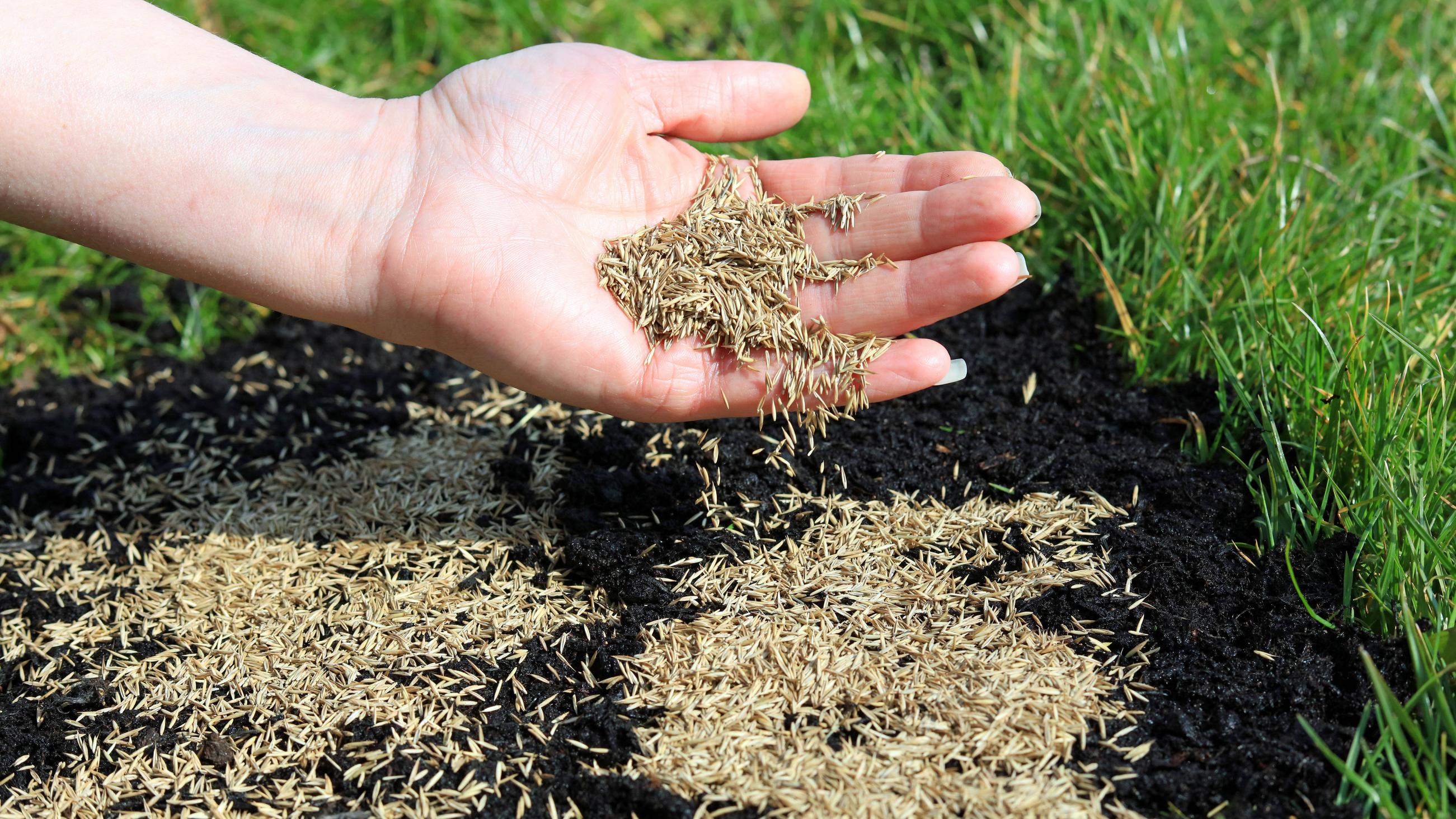Home>Gardening Tips and Tricks>What Mineral Is Used To Make Fertilizer


Gardening Tips and Tricks
What Mineral Is Used To Make Fertilizer
Modified: January 22, 2024
Learn how maximizing yield in fertilizer production can be achieved by utilizing the right mineral. Find out which mineral is commonly used for making fertilizer.
(Many of the links in this article redirect to a specific reviewed product. Your purchase of these products through affiliate links helps to generate commission for Chicagolandgardening.com, at no extra cost. Learn more)
Table of Contents
- Introduction
- Importance of Fertilizers in Agriculture
- Role of Minerals in Fertilizer Production
- Primary Mineral Used in Fertilizer Manufacturing
- Properties and Benefits of the Primary Mineral in Fertilizers
- Other Minerals Used in Fertilizer Production
- Environmental Considerations in Mineral-Based Fertilizer Production
- Conclusion
Introduction
Welcome to the world of agriculture, where the green fields and bountiful crops are nurtured with care. Behind the scenes, there is a vital player that ensures the health and productivity of these crops – fertilizers. Fertilizers play a crucial role in supplying essential nutrients to plants, enabling them to thrive and produce higher yields.
In the realm of fertilizer production, minerals serve as one of the key ingredients. These minerals are sourced from the earth and undergo a series of processes to create the fertilizers used by farmers worldwide. Understanding the minerals involved in fertilizer manufacturing is vital for optimizing the yield and quality of crops.
Among the various minerals used in fertilizer production, there is a primary mineral that commonly takes center stage. This mineral possesses unique properties and benefits that make it indispensable in the world of agriculture. By shedding light on this primary mineral and its counterparts, we can delve deeper into the fascinating world of mineral-based fertilizers and their impact on agriculture.
Moreover, it is important to consider the environmental aspects of mineral-based fertilizer production. As we explore the minerals used and their effects on the ecosystem, we can gain valuable insights into sustainable practices that maximize yield while minimizing the ecological footprint.
In this article, we will explore the mineral used in fertilizer production and delve into its properties, benefits, and environmental considerations. So, let’s embark on this journey to uncover the secrets of mineral-based fertilizers and their role in maximizing crop yields.
Importance of Fertilizers in Agriculture
In the world of agriculture, the use of fertilizers has revolutionized crop production. Fertilizers provide plants with a balanced supply of essential nutrients, allowing them to grow faster, stronger, and produce higher yields. This has played a pivotal role in supporting the ever-growing global population and ensuring food security.
One of the main reasons why fertilizers are essential in agriculture is that they replenish the nutrients that are naturally present in the soil but may become depleted over time. As crops are harvested, they take up nutrients from the soil, and if not replenished, the soil’s fertility can diminish, resulting in decreased crop productivity. Fertilizers bridge this nutrient gap by supplying the necessary elements that may be lacking.
Fertilizers are specifically formulated to provide plants with the macronutrients – nitrogen (N), phosphorus (P), and potassium (K) – as well as the micronutrients needed for optimal growth. These nutrients are vital for processes such as photosynthesis, root development, and overall plant health. By ensuring an adequate nutrient supply, fertilizers enable plants to reach their full potential in terms of size, yield, and quality.
Another key advantage of using fertilizers is the ability to tailor the nutrient composition based on the specific needs of different crops and soil conditions. Different plants have varying nutrient requirements, and by using fertilizers, farmers can optimize nutrient availability to achieve maximum productivity. Additionally, fertilizers can be applied in a targeted manner to address nutrient deficiencies in the soil, which helps prevent nutritional imbalances and promote healthy plant growth.
Furthermore, fertilizers play a vital role in promoting sustainable agriculture. By optimizing nutrient availability, farmers can maximize the use of land resources, reduce the amount of land needed for cultivation, and minimize the encroachment on natural habitats. This leads to more efficient land use and preserves biodiversity, mitigating the environmental impact of agriculture.
The importance of fertilizers in agriculture cannot be understated. They are a key tool for farmers to improve crop production, increase yields, and ensure the nutritional needs of a growing population are met. By replenishing nutrients, tailoring nutrient compositions, and promoting sustainable practices, fertilizers are playing a crucial role in shaping the future of agriculture.
Role of Minerals in Fertilizer Production
Minerals are the backbone of the fertilizer industry, playing a vital role in the production and formulation of fertilizers. They contribute essential nutrients that are crucial for the growth and development of plants, supporting their overall health and maximizing crop yields.
One of the primary roles of minerals in fertilizer production is to serve as a source of macro- and micronutrients. These nutrients, such as nitrogen, phosphorus, potassium, calcium, magnesium, and sulfur, are essential for plant growth and are required in varying amounts by different crops. Minerals are carefully selected and processed to extract these nutrients and transform them into a form that is readily available for plant uptake.
Minerals also contribute to the physical structure of fertilizers. They act as carriers, binders, or bulking agents that ensure the even distribution and proper release of nutrients in the soil. Certain minerals, such as clay minerals or zeolites, can absorb and store nutrients, releasing them gradually over time to match the plants’ needs. This controlled release mechanism reduces the risk of nutrient leaching and maximizes nutrient utilization by the plants.
In addition to their nutrient content, minerals play a crucial role in improving soil fertility and structure. They help to enhance soil moisture retention, aeration, and drainage, which are vital for root development and nutrient uptake. Minerals with high cation exchange capacity (CEC), such as clay minerals or humic substances, can hold onto and release nutrients effectively, reducing nutrient losses and improving soil fertility over the long term.
Furthermore, minerals used in fertilizer production undergo rigorous quality control to ensure their purity and efficacy. This includes testing for heavy metal contamination or impurities that could be harmful to plants or the environment. The quality assurance process guarantees that the minerals used in fertilizers are safe, reliable, and meet the necessary standards for agricultural use.
Ultimately, the role of minerals in fertilizer production is multi-faceted. They provide essential nutrients, contribute to the physical structure of fertilizers, improve soil fertility, and undergo quality control measures to ensure their effectiveness. By incorporating these minerals into fertilizer formulations, farmers can effectively optimize nutrient availability, support crop growth, and maximize the overall yield and quality of their agricultural produce.
Primary Mineral Used in Fertilizer Manufacturing
When it comes to the primary mineral used in fertilizer manufacturing, one mineral stands out – phosphate rock. Phosphate rock, which is primarily composed of the mineral apatite, is a key ingredient in the production of phosphorus-based fertilizers.
Phosphorus is a vital nutrient that plays a crucial role in various physiological and biochemical processes within plants. It is essential for energy transfer, photosynthesis, root development, and the formation of DNA and RNA. Phosphate rock serves as the primary source of phosphorus in fertilizer production, providing plants with this vital nutrient.
The extraction of phosphate rock involves mining it from deposits that have accumulated over millions of years. These deposits, formed from the remains of marine organisms, contain high concentrations of phosphate minerals. Once mined, the phosphate rock is processed and converted into different forms that are suitable for fertilizers.
Phosphate rock can be converted into water-soluble phosphate fertilizers through chemical reactions known as beneficiation and thermal processing. Beneficiation involves removing impurities and concentrating the phosphorus content, while thermal processing – such as calcination or acidulation – converts the phosphate rock into a form that is more readily available for plant uptake.
Water-soluble phosphate fertilizers derived from phosphate rock are used in various forms, such as diammonium phosphate (DAP), monoammonium phosphate (MAP), and triple superphosphate (TSP). These fertilizers provide a readily available source of phosphorus that plants can easily absorb and utilize for their growth and development.
Phosphorus is one of the three primary macronutrients required by plants, alongside nitrogen and potassium. The availability of phosphorus is particularly critical during early plant growth stages and in regions where the natural soil phosphorus content may be limited. Phosphate rock-derived fertilizers play a vital role in bridging this phosphorus deficiency gap and ensuring optimal plant nutrition.
It is important to note that while phosphate rock is the primary mineral used in fertilizer manufacturing, it is often combined with other minerals and nutrients to create balanced fertilizer formulations. These formulations take into account the nutrient requirements of different crops and soil conditions, ensuring that plants receive a comprehensive supply of essential nutrients for their growth and productivity.
In summary, phosphate rock, with its rich phosphorus content, is the primary mineral used in fertilizer manufacturing. It serves as a vital source of phosphorus, which is essential for plant growth and development. Through beneficiation and thermal processing, phosphate rock is transformed into various water-soluble phosphate fertilizers that provide readily available phosphorus for optimal crop nutrition.
Properties and Benefits of the Primary Mineral in Fertilizers
The primary mineral used in fertilizer manufacturing, phosphate rock, possesses unique properties and provides several benefits when incorporated into fertilizers. These properties contribute to the effectiveness of phosphorus-based fertilizers and their impact on crop growth and productivity.
One of the key properties of phosphate rock is its high phosphorus content. Phosphorus is an essential nutrient for plant growth, playing a vital role in energy transfer, photosynthesis, and overall plant metabolism. The high phosphorus content in phosphate rock ensures an abundant supply of this crucial nutrient for plants, promoting their development and optimizing their yield potential.
Phosphate rock is also known for its relatively slow-release characteristics. When incorporated into fertilizers, phosphate rock gradually releases phosphorus over an extended period, providing a sustained source of nutrient availability to plants. This slow-release property helps to prevent nutrient leaching, reduces the risk of nutrient wastage, and contributes to the efficient utilization of phosphorus by the crops.
In addition to its slow-release properties, phosphate rock contains other essential minerals that benefit plant growth. These minerals include calcium, magnesium, and trace elements such as iron and zinc. By incorporating these minerals into fertilizers, phosphate rock enhances the overall nutrient balance, promoting balanced plant nutrition and supporting healthy growth across different crops.
The use of phosphate rock-derived fertilizers also offers economic benefits to farmers. Phosphorus is a limited resource, and the mining and extraction of phosphate rock require significant investment and energy. By incorporating purified and processed phosphate rock into fertilizers, farmers can ensure an efficient and targeted application of phosphorus, maximizing its utilization and minimizing waste. This, in turn, leads to cost savings and improved efficiency in nutrient management.
Furthermore, the use of phosphate rock-based fertilizers contributes to sustainable agriculture practices. Phosphorus is a non-renewable resource, and its mining and production can have environmental implications. By utilizing phosphate rock efficiently and responsibly in fertilizer formulations, farmers can minimize the environmental impact associated with phosphorus extraction and ensure the long-term availability of this essential nutrient.
Overall, the properties of phosphate rock as the primary mineral in fertilizers, including its high phosphorus content, slow-release characteristics, and accompanying essential minerals, provide several benefits for crop growth. These benefits include optimized nutrient availability, balanced plant nutrition, improved efficiency in nutrient utilization, and the promotion of sustainable agricultural practices.
Other Minerals Used in Fertilizer Production
While phosphate rock is the primary mineral used in fertilizer production, there are several other minerals that play a significant role in creating balanced and effective fertilizers. These minerals contribute essential nutrients, provide specific benefits, and enhance the overall performance of fertilizers in supporting plant growth and maximizing crop yields.
Potassium is another vital macronutrient required by plants, and it is commonly derived from the mineral sylvite in fertilizer production. Potassium plays a crucial role in regulating various plant functions, including water uptake, nutrient transportation, enzyme activation, and disease resistance. Potassium-based fertilizers, such as potassium chloride (KCl) or potassium sulfate (K2SO4), ensure an adequate supply of this essential nutrient to promote plant vigor and improve overall crop quality.
Nitrogen is a key element required for plant growth and is obtained from various mineral sources in fertilizer production. The most common nitrogen-containing minerals include ammonium nitrate, urea, and ammonium sulfate. Nitrogen is essential for vegetative growth, protein synthesis, and chlorophyll production. Nitrogen-based fertilizers provide a readily available source of this nutrient, supporting rapid plant growth and leaf development.
Calcite, a form of calcium carbonate, is utilized in fertilizer production to provide plants with the essential nutrient calcium. Calcium is crucial for cell wall development, proper root growth, and disease prevention. Calcium-based fertilizers, such as calcitic lime or gypsum, help correct calcium deficiencies in soils and promote strong and healthy plants.
Magnesite, a mineral composed of magnesium carbonate, is used to produce magnesium-based fertilizers. Magnesium is a key component of chlorophyll and plays a vital role in photosynthesis, enzyme activation, and nutrient uptake. Magnesium-based fertilizers, such as magnesium sulfate (Epsom salt) or magnesium oxide, supplement soil deficiencies and promote optimal plant growth.
In addition to these primary minerals, other micronutrients are crucial for plant growth and are often included in fertilizer formulations. These micronutrients include iron, manganese, zinc, copper, molybdenum, and boron. These minerals are typically sourced from various mineral salts or chelated forms and incorporated into fertilizers to address specific nutrient deficiencies and promote balanced plant nutrition.
The use of these additional minerals in fertilizer production ensures a comprehensive and balanced nutrient supply for plants. By incorporating a variety of minerals, fertilizers can effectively meet the specific nutrient requirements of different crops, soil conditions, and regions. This tailored approach to nutrient management helps optimize plant growth, prevent nutrient deficiencies, and maximize crop yields.
It is important to note that the selection and use of additional minerals in fertilizer production require careful consideration of the specific nutrient needs of different crops, soil conditions, and local regulations regarding mineral use and application rates. Responsible fertilization practices and adherence to industry guidelines are essential in achieving efficient and sustainable nutrient management.
Environmental Considerations in Mineral-Based Fertilizer Production
As the demand for agricultural productivity continues to grow, it is crucial to address the environmental impact of mineral-based fertilizer production. While fertilizers play a vital role in maximizing crop yields, their manufacturing process and usage can have implications for the environment. Therefore, it is important to consider and implement sustainable practices to minimize the ecological footprint of mineral-based fertilizer production.
One significant environmental consideration is the responsible mining and extraction of mineral resources. Mining operations can have a range of impacts, including habitat disruption, soil erosion, and water pollution. To mitigate these impacts, sustainable mining practices such as land reclamation, water management, and biodiversity conservation should be implemented to minimize the disturbance to ecosystems and restore affected areas.
In addition to responsible mining, energy consumption and greenhouse gas emissions are important factors to consider. The production processes, such as beneficiation and thermal processing, require energy inputs, often derived from fossil fuels. By exploring alternative energy sources, such as renewable energy, and adopting energy-efficient technologies, the carbon footprint of fertilizer production can be reduced, contributing to climate change mitigation.
The efficient use and application of fertilizers are also crucial for minimizing environmental impact. Over-application or improper application of fertilizers can result in nutrient leaching, leading to water pollution and eutrophication of aquatic ecosystems. Implementing precision agriculture techniques, such as site-specific nutrient management and controlled-release fertilizers, can help optimize nutrient application, prevent nutrient losses, and improve nutrient use efficiency.
Furthermore, nutrient management strategies should be employed to minimize nutrient runoff. Nutrients that are not absorbed by plants can be carried by surface runoff into water bodies, leading to algal blooms and oxygen depletion. Implementing best management practices, such as buffer zones, cover crops, and conservation tillage, can help reduce nutrient runoff, protect water quality, and safeguard aquatic ecosystems.
Another vital consideration is the proper disposal of unused or expired fertilizers. Improper disposal can lead to nutrient accumulation in soil, water bodies, or even leaching into groundwater, causing harm to the environment. Education and awareness programs should be implemented to inform farmers and other stakeholders about proper storage, handling, and disposal practices to minimize the environmental impact of unused fertilizers.
Lastly, embracing circular economy principles can contribute to sustainable mineral-based fertilizer production. This involves recycling and reusing waste by-products or organic materials, such as crop residues or animal manure, to produce nutrient-rich fertilizers. Utilizing these alternative sources can reduce the reliance on mineral extraction and promote a more sustainable and circular approach to fertilization.
In summary, environmental considerations in mineral-based fertilizer production involve responsible mining, energy efficiency, nutrient management, proper disposal, and embracing circular economy principles. By implementing sustainable practices throughout the fertilizer production and usage chain, we can minimize the environmental impact, protect natural resources, and work towards a more sustainable agricultural system.
Conclusion
Mineral-based fertilizers play a vital role in maximizing crop yields and supporting agricultural productivity. From the primary mineral, phosphate rock, to other minerals like potassium, nitrogen, calcium, and magnesium, these minerals contribute essential nutrients that plants require for optimal growth.
The properties of these minerals, such as their nutrient content, slow-release characteristics, and accompanying micronutrients, provide several benefits for crop growth. They ensure an adequate supply of nutrients, promote balanced plant nutrition, improve efficiency in nutrient utilization, and contribute to the overall health and productivity of plants.
However, it is important to consider the environmental impact of mineral-based fertilizer production. Responsible mining practices, energy efficiency, proper nutrient management, and appropriate disposal methods are crucial for minimizing the ecological footprint and ensuring sustainable fertilizer production.
By implementing sustainable practices, such as precision agriculture techniques, the use of controlled-release fertilizers, and the promotion of circular economy principles, we can optimize nutrient management, reduce nutrient losses, and protect the environment. These practices contribute to more efficient and sustainable agricultural systems, ensuring the long-term availability of essential resources.
In conclusion, mineral-based fertilizers, with their diverse range of minerals and essential nutrients, are essential for supporting agricultural productivity. By considering the environmental implications and embracing sustainable practices throughout the fertilizer production and usage chain, we can strike a balance between maximizing yield and minimizing the impact on the environment. By doing so, we can create a future where agriculture thrives, crops flourish, and the planet sustains.










